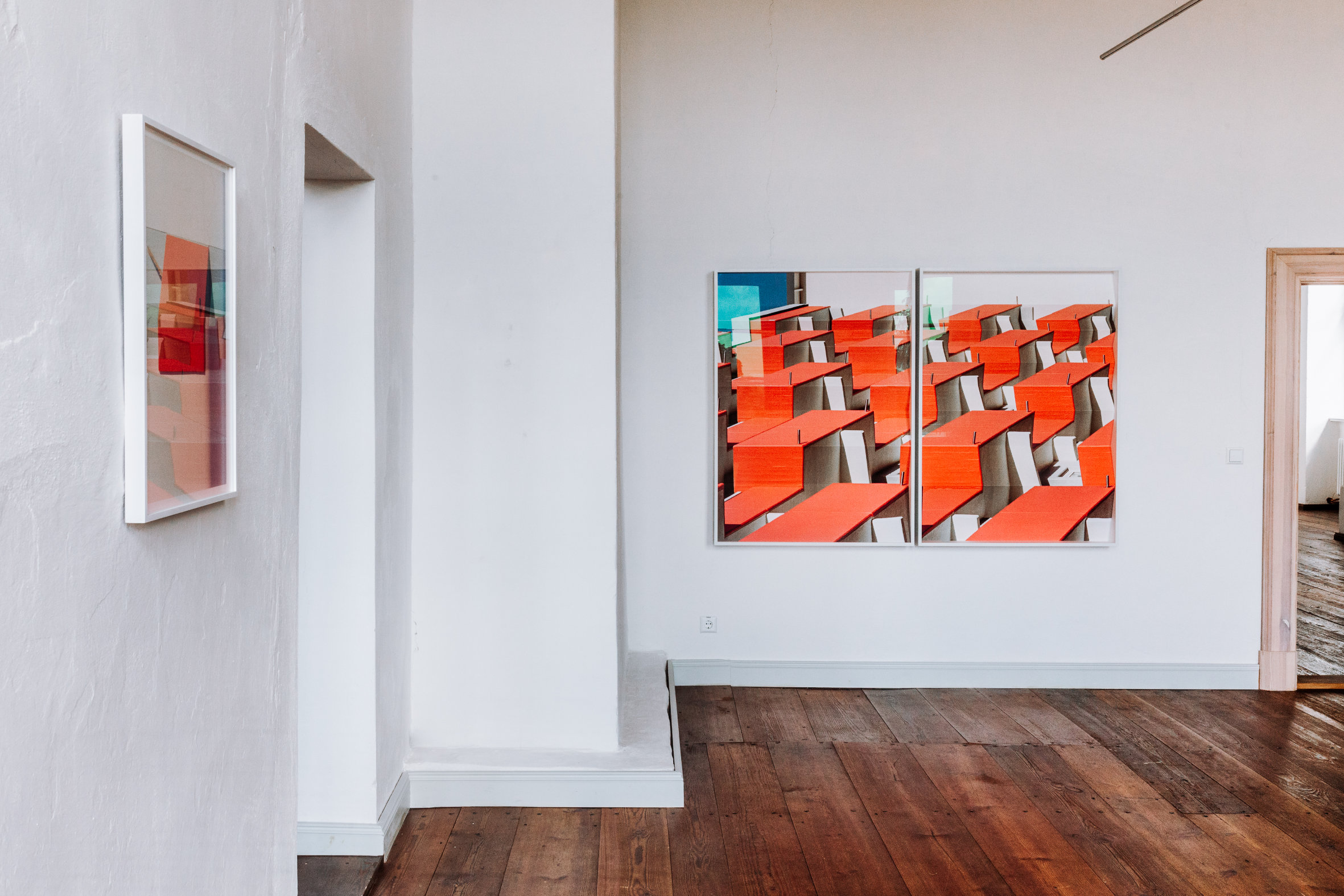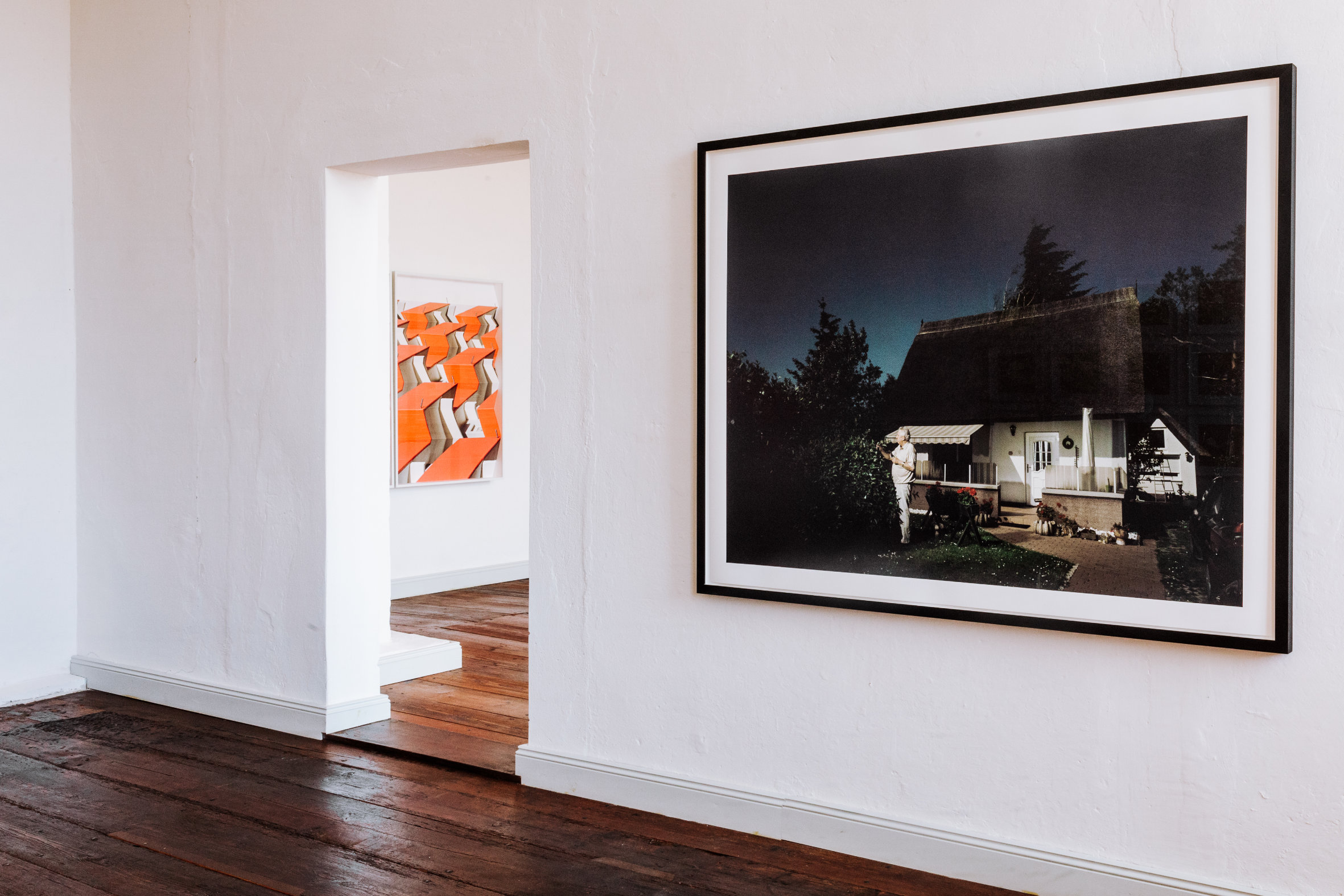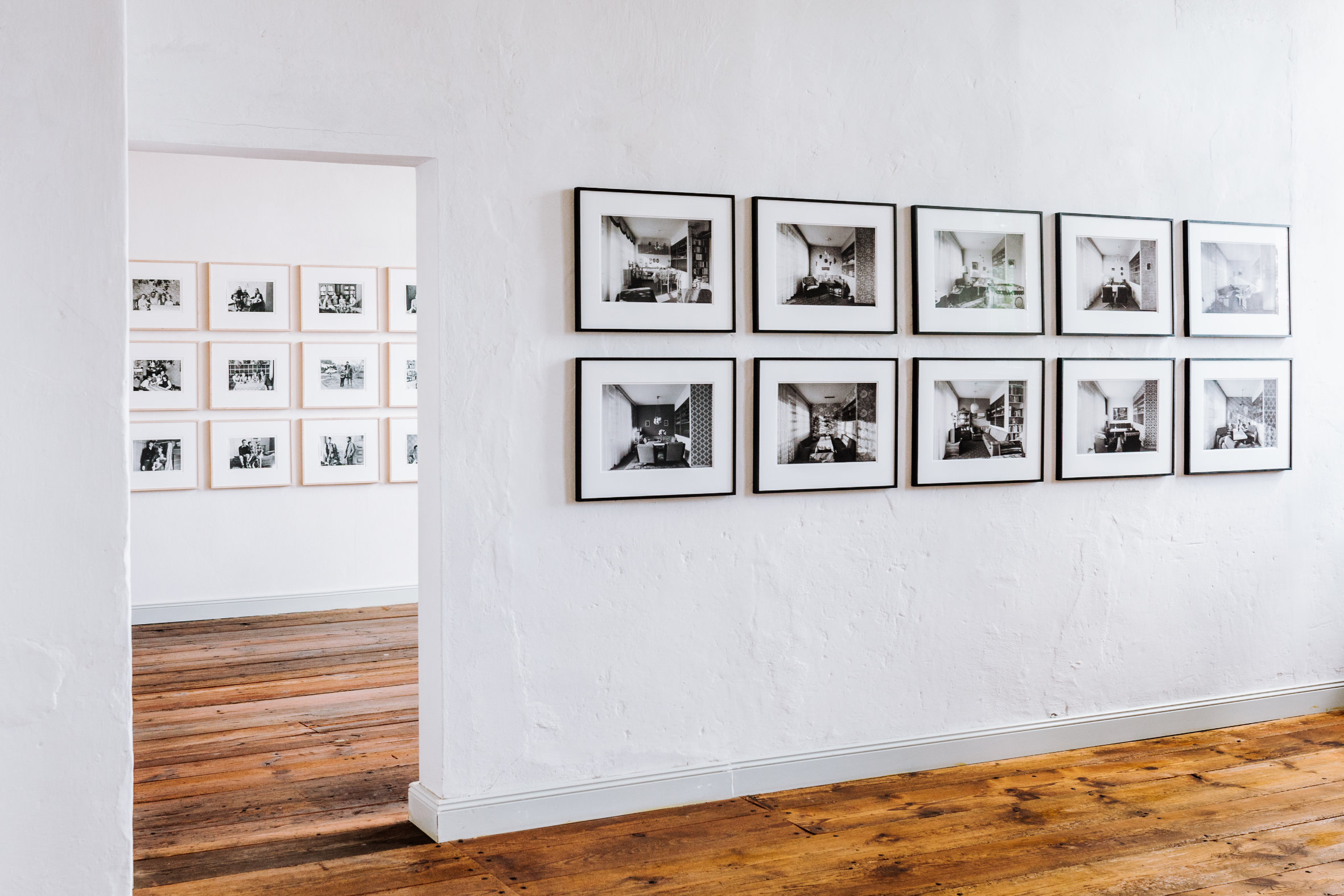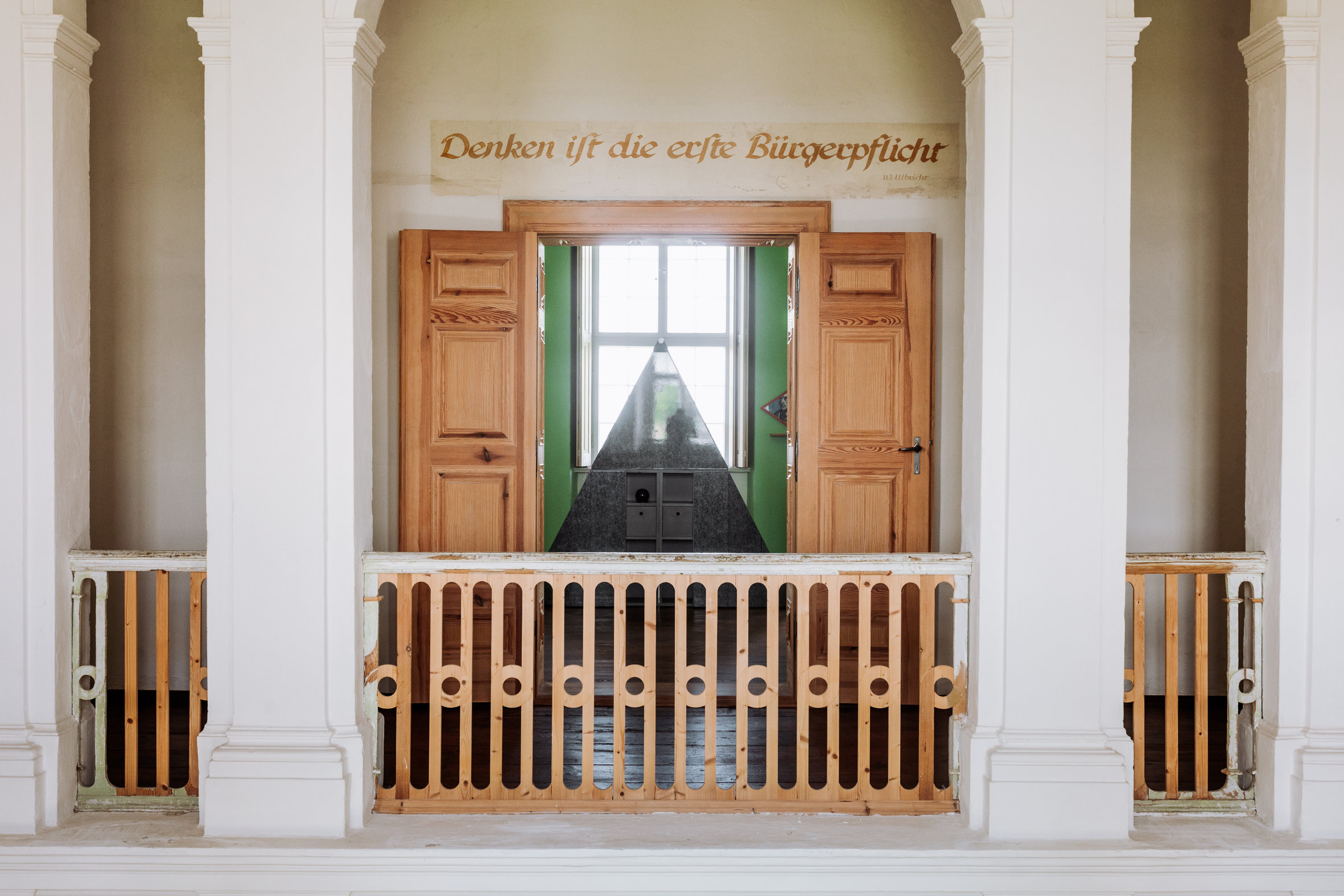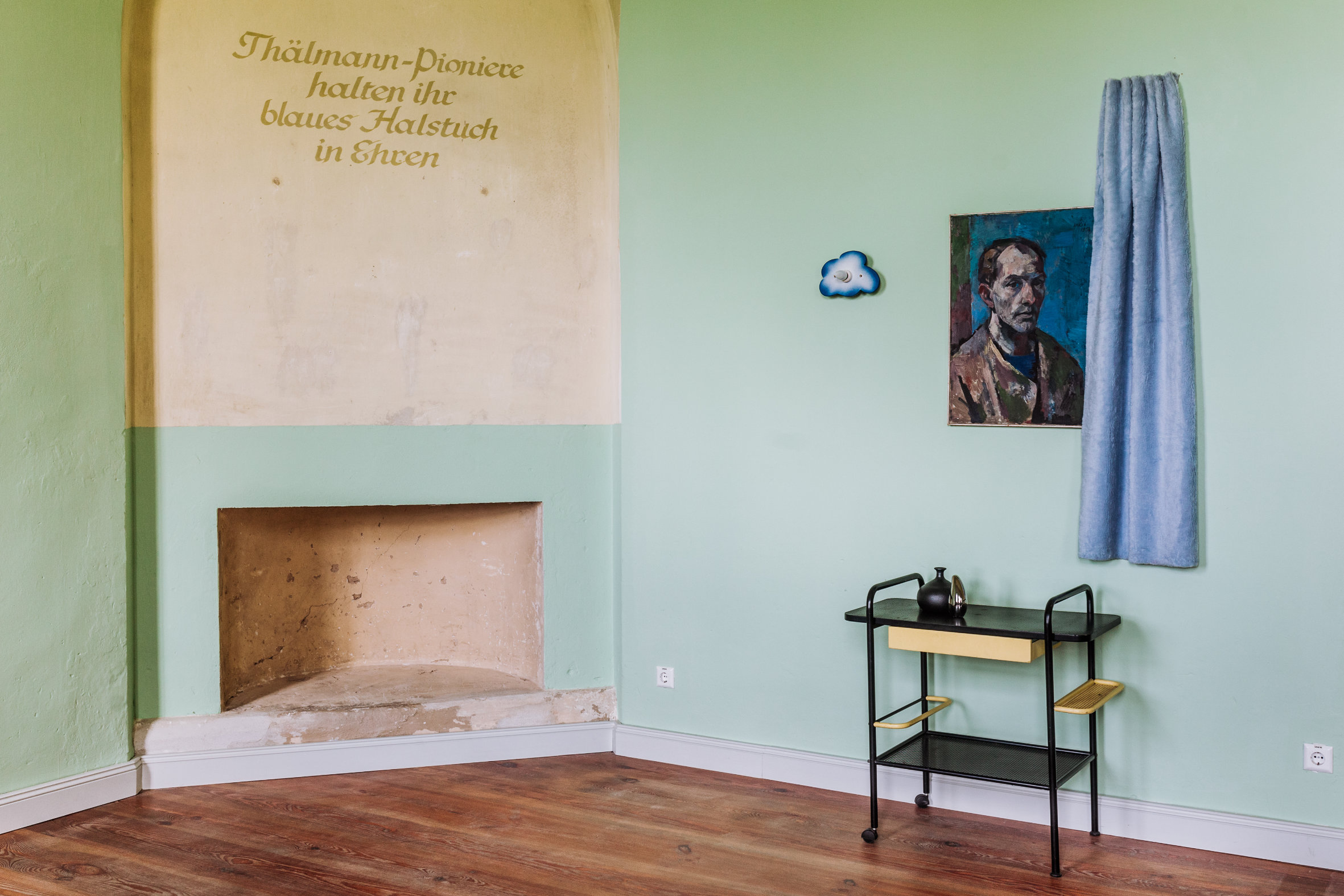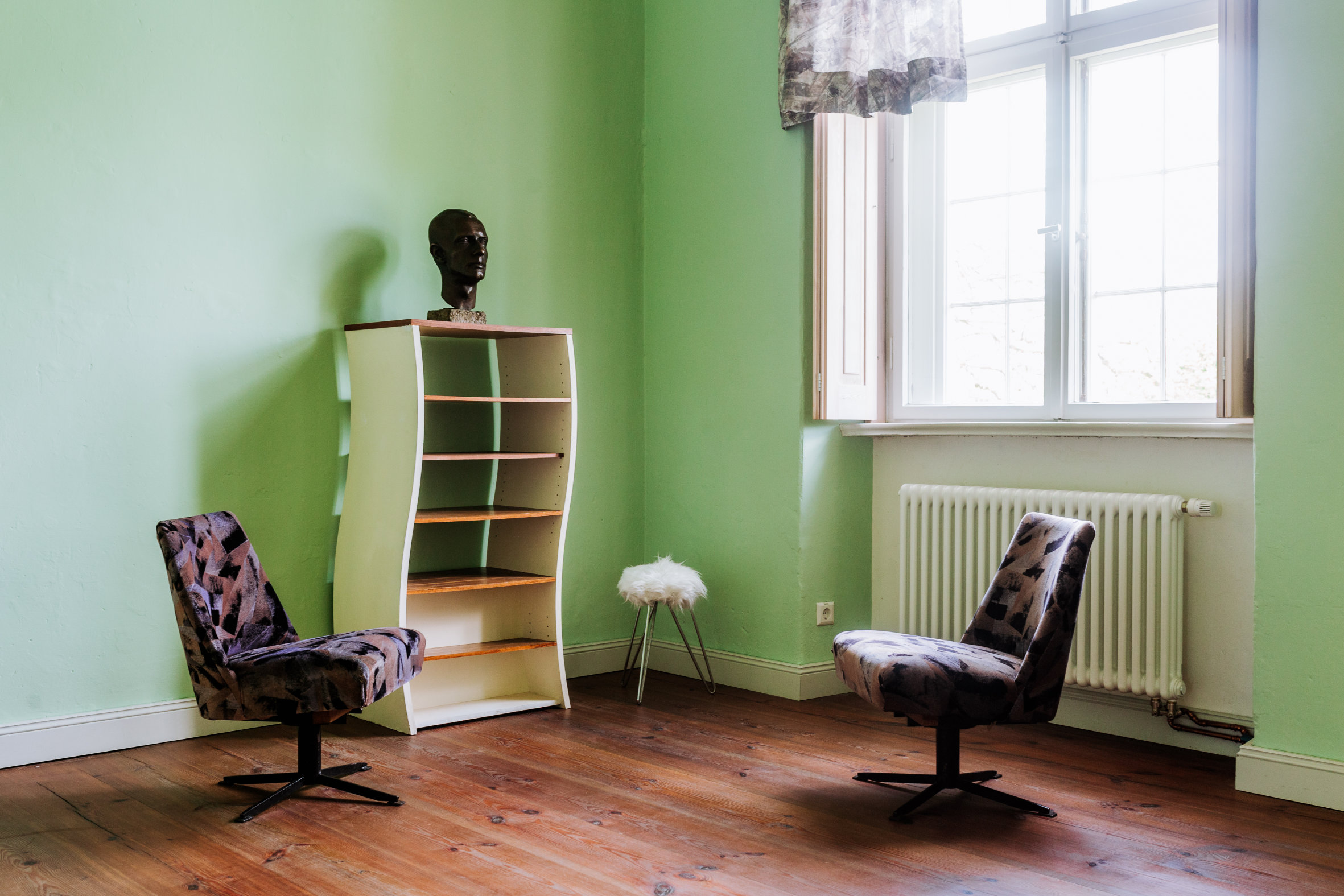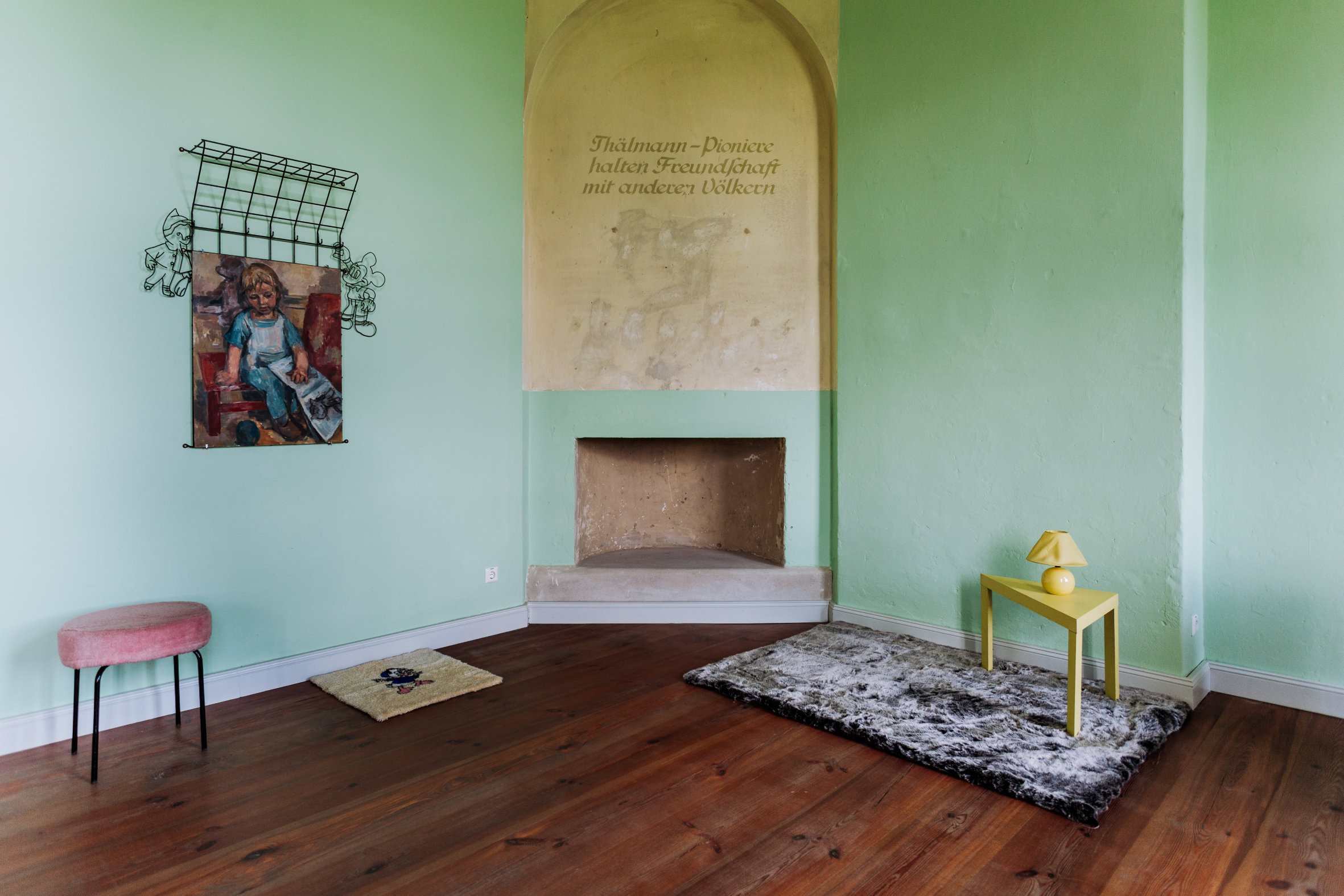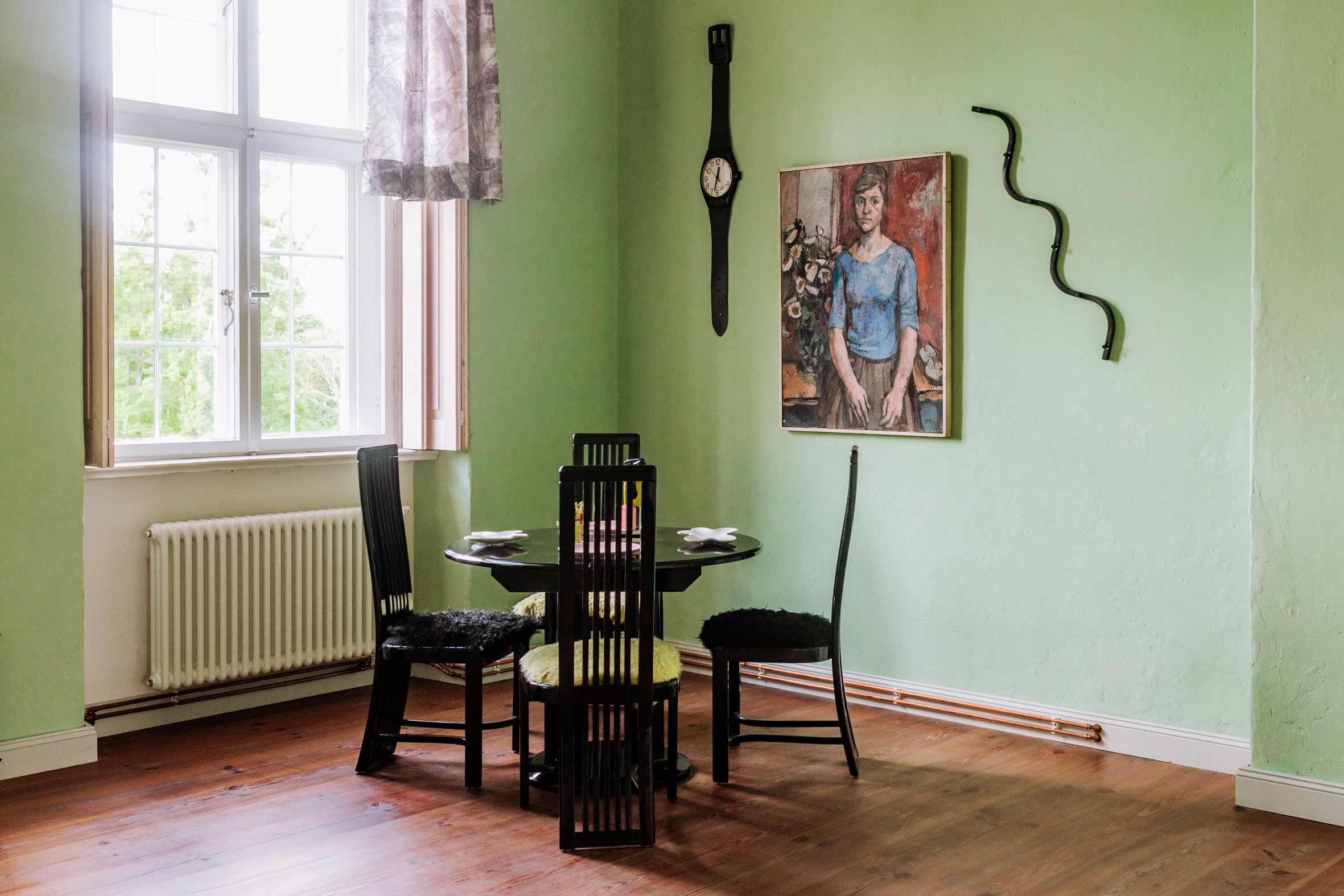Exhibition
TRAUTES HEIM, ALLEIN | SWEET HOME, ALONE
Artists and exhibition period
Artists
Sibylle Bergemann
Christian Borchert
Andrea Grützner
Andreas Mühe
Henrike Naumann
Peter Piller
May 23, 2021 – October 31, 2021
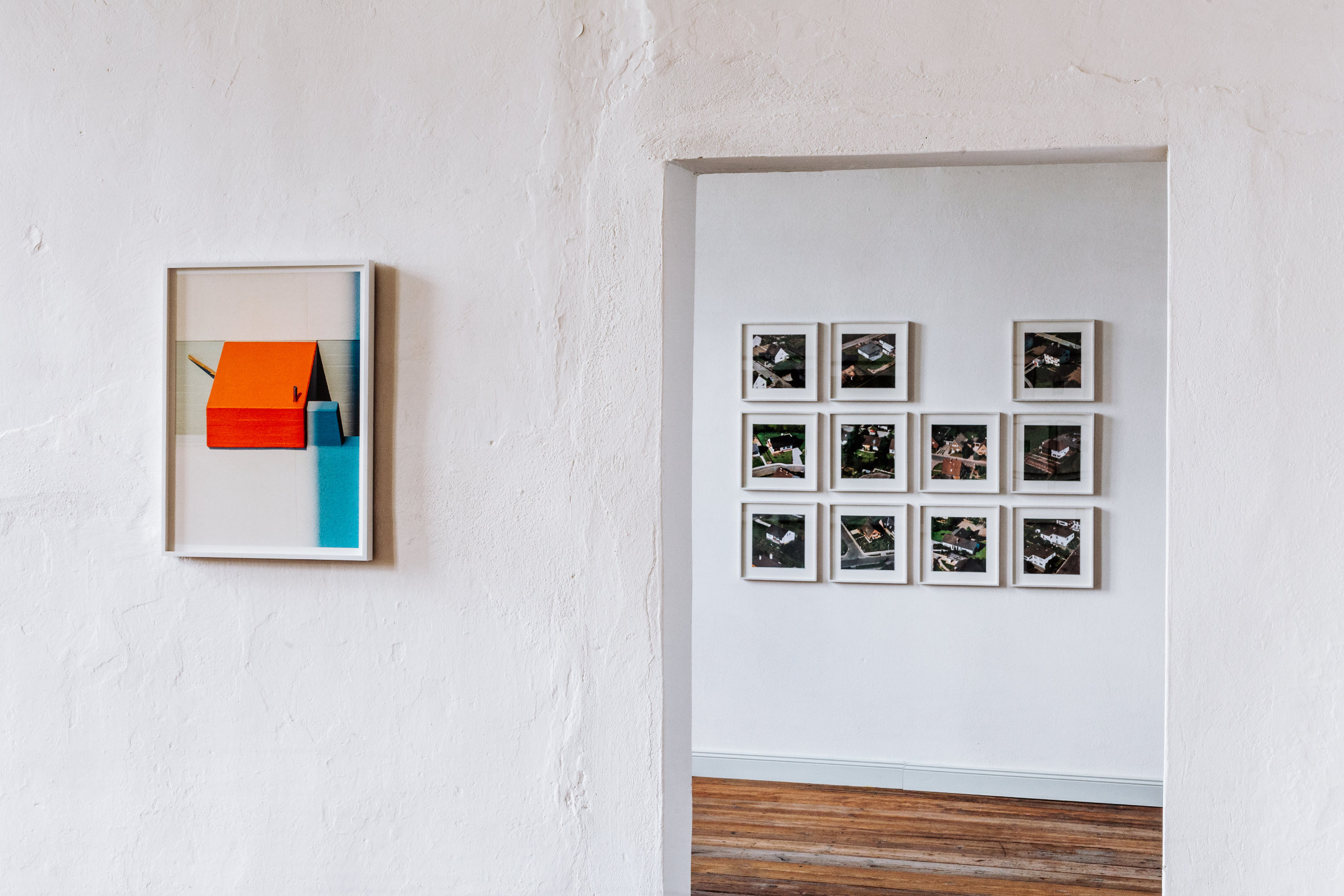
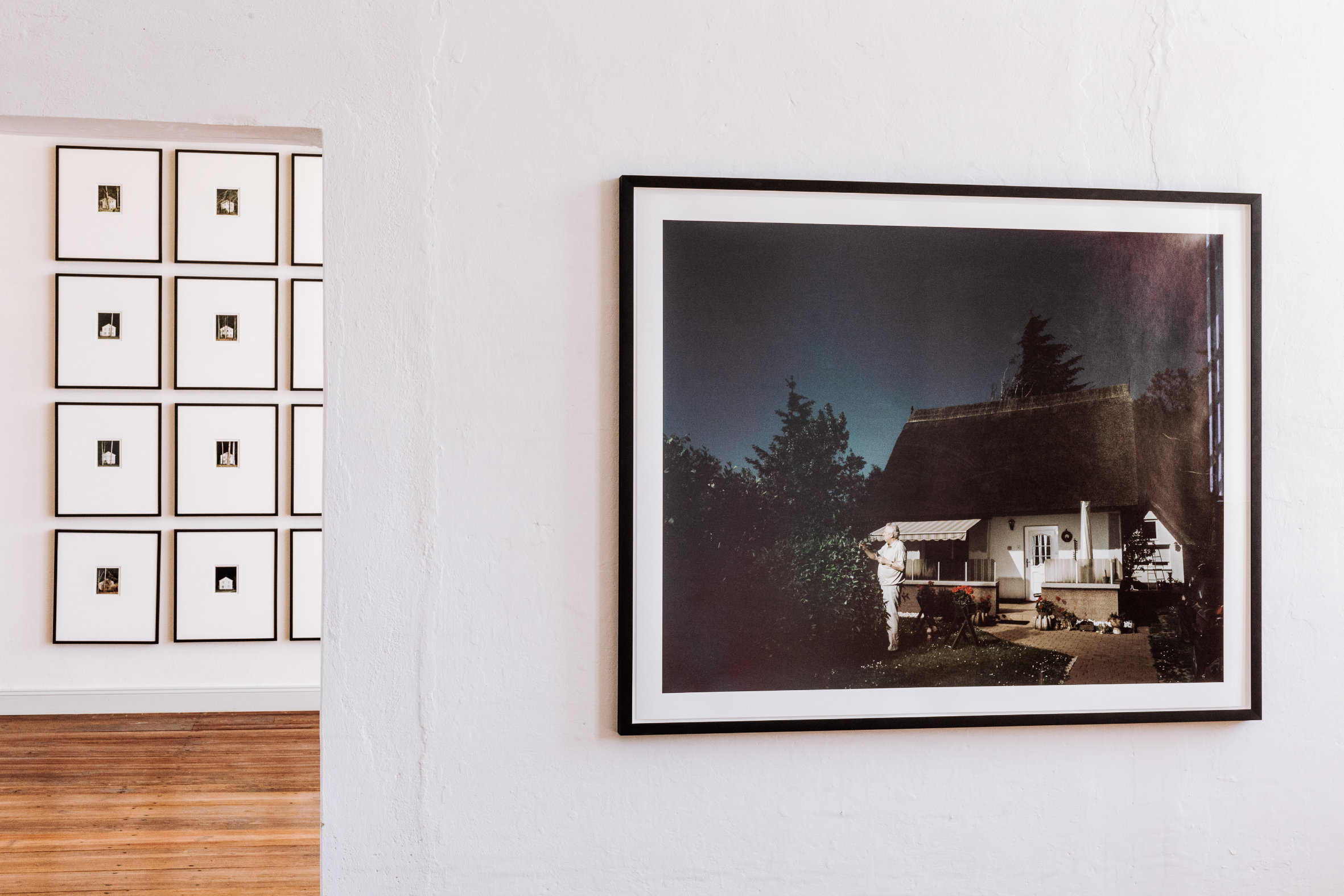
About the special exhibition TRAUTES HEIM, ALLEIN | SWEET HOME, ALONE
Sibylle Bergemann, Andrea Grützner, Henrike Naumann, Andreas Mühe, Peter Piller and Christian Borchert are central artistic positions that view the present of our society with awareness of the past. In the exhibition TRAUTES HEIM, ALLEIN | SWEET HOME, ALONE, the home of one’s own becomes the central subject and pictorial motif. The “home sweet home” is initially a promise of happiness. In terms of aesthetics and taste, however, this can quickly turn into a staid, merely pretended bliss. The flip side of the “cosy home” and its private comfort far from the world is isolation and distancing, as well as conformity and obedience. The retreat into the private sphere has historically often been particularly evident in times of political unrest, whether in the Biedermeier era or much later in the Cold War. Sibylle Bergemann, Andrea Grützner, Henrike Naumann, Andreas Mühe, Peter Piller and Christian Borchert make this dichotomy artistically visible. Their works are all based on real models: the places or objects they show really exist. The houses, living spaces, interior furnishings and decorative elements that they use as motifs in their artistic works initially give the impression of political innocence. Behind this, however, are politically, sociologically and ideologically charged motifs that reflect a critical image of our time and the state of our society.
In Sibylle Bergemann’s case, it is a photographic series on the prefabricated panel building type “P2”, which stands not only for a form of housing but also for an attitude. It was a prestige project of the GDR that was supposed to symbolise the new, socialist housing. A small architectural installation, the so-called “hatch”, which connects the kitchen and the living room, is also intended to revolutionise the position of women in the household.
In the group of works entitled “Family Portraits”, Christian Borchert depicts various families he visited throughout the GDR. He shows them in their living rooms, just as they want to present themselves to the photographer. He notes down the year, the occupation of the parents or couple, and the place of residence. A cross-section of GDR society is revealed, even if the core family of father, mother, child(ren), hardly varies.
Peter Piller’s work Von Erde schöner consists of found archive material from the 1980s documenting German homes from the FRG. Piller’s selection depicts a bourgeois, middle-class reality of Germany that dreams of its own house, its own garden and its own car. One group of motifs in the work is devoted to the subject of “mowing the lawn” and captures the obligatory, petit-bourgeois ritual of tending the garden.
Andrea Grützner’s analogue photographs, on the other hand, initially appear as colourfully coherent, aesthetically pleasing pictorial compositions. The titles of the two groups of works, das Eck, untitled and Erbgericht, reveal little of the details of what is depicted, though they do hint at their places of origin. This is on the one hand the so-called “German corner” in Koblenz and on the other hand an inn in the village where her grandparents live. Grützner’s concentrated focus on formal qualities such as colour and plasticity uncover tasteful idiosyncrasies and preferences and clarify their role as markers of their time.
In Henrike Naumann’s installation DDR Noir, pieces of post-reunification furniture in a recreated colourful Memphis style meet the figurative paintings of her grandfather, Karl Heinz Jakob, from the 1950s and 60s, who was a recognised artist in the GDR. Via the obvious contrast – iconographically as well as ideologically – between furniture and painting, she demonstrates the course of history and invokes questions about the much-invoked “Ostalgie” since then, as well as the dreams and ideals of people before and after the Wende and what has become of them today.
Andreas Mühe also deals with the German past in his works, recalling above all its darker parts. A portrait of Egon Krenz, the last president of the GDR, shows the man in his present reality: as a historical figure of a bygone ideology in complete isolation. In the series Wandlitz, 2011, Andreas Mühe photographs the houses in which the political grandees of the SED leadership lived, isolated from the people, in the forest settlement of Wandlitz. A strip on the map where Hermann Göring had previously built an estate of monumental size and even earlier the German Emperor indulged in his hunting pleasures. The facades of the houses, however, do not show any colours and reveal nothing about the political past of the place. The assembled terrace furniture from the Obersalzberg work group seems just as innocuous. In that idyllic Bavarian village, Hitler resided far away from the horrors of war. By depicting the furniture group as Hitler had it in his residence in isolation from its surroundings, Mühe makes the politically charged nature of living space and home particularly tangible.
Ideology leaves visible traces in the aesthetics of its time. Retreating into the domestic private sphere as happiness means in return staying away from public life and thus also potentially a rejection of political participation. The artistic positions in the exhibition show that the cosiness of one’s own four walls can easily be deceptive. Every façade, every living space, every piece of furniture is always a bearer of the political and historical conditions of its time. The ambivalent power of the cosy home seems to be gaining immeasurable relevance again today. It is an artistic and, at the same time, a political-social theme that needs to be scrutinised from all sides, from inside and outside.
Curated by Dr. Kristina Schrei.

